Best Things to Do in Spain
Introduction
Besides the astonishing architectural heritage and the relaxing natural beauty, what makes the portrait of Spain genuine is the bustling flea market at El Rastro in Madrid, the frenzied nightlife scene of Barrio del Carmen in Valencia, the intrinsic fear of the Pamplona Bull Running, the sheer fun of Buñol’s La Tomatina festival, the week-long joy in La Feria de Sevilla of the flamenco, the pleasure from tapas and wine, the constant fiestas and siestas, and of course, the corrida.
Of course, all of this could, of course, take an entire year to embrace, but if time is on your side, it’s most certainly worth it! The country is reminiscent of a virus—once you become infected with its allure, it remains in your blood forever more, persistently reminding you of the unique experiences you’ve reveled in within that sun-kissed paradise located on the Iberian Peninsula.
But let’s get on with our list of the best things to do in Spain!
Granada: The Alhambra
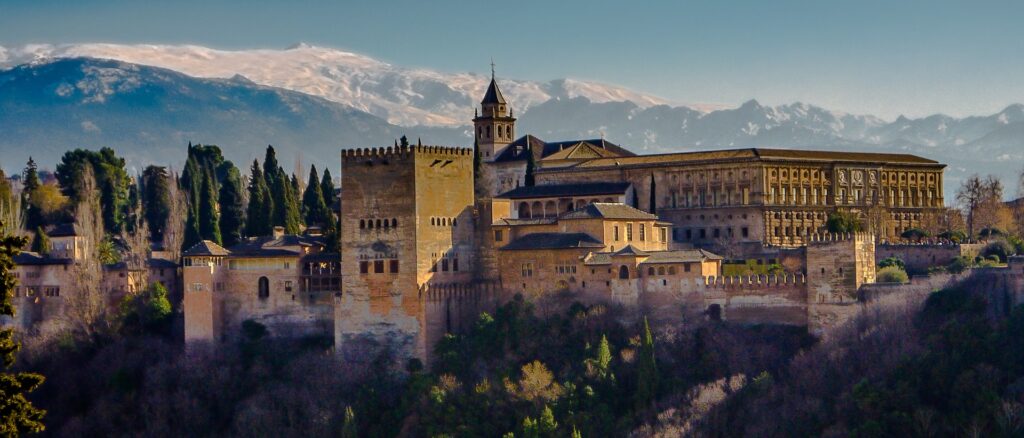
Chosen as a prestigious location to host his court and looking down upon the city of Granada, the first Nasrid king, el Ahmar, opted for Alhambra. Subsequent rulers further enhanced and altered it consistently to become a fantastic complex that very few can rival.
Colossal chambers with majestic ceilings, lofty halls, marble fountains, intimate royal baths, and pomegranate gardens merely serve as a foretaste of this Moorish-Hispanic treasure. A guided tour will reveal the spiciest secrets and shadiest nooks nestled in this historic gem, which some would argue deserves the title—the eighth wonder of the world.
Valencia: City of the Arts and Sciences (Ciudad de las Artes y las Ciencias)
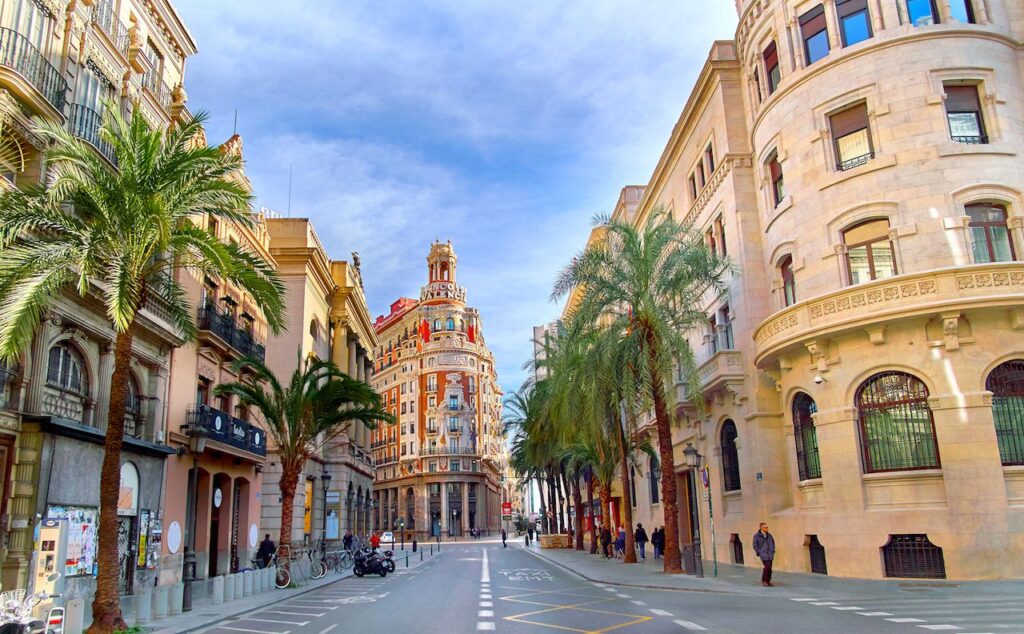
Ciudad de las Artes y las Ciencias is a futuristic construction sprawls over 1.24 miles (2 km). It represents a bottomless well of attractions, and many would say it’s a true cultural marvel. The alluring design is merely a foretaste of the innards.
The complex hosts the Umbracle, together with an outdoor art gallery and a large variety of indigenous plants; the Hemisfèric, with its Laserium, Planetarium, and Imax Cinema; the Principe Felipe Science Museum, which represents a center of interactive science; the Palau de les Reina Sofía – an opera house and performing arts center, and the Oceanográfico, Europe’s largest aquarium, hosting more than 500 marine species. This establishment will leave you in total awe.
Balearic Islands
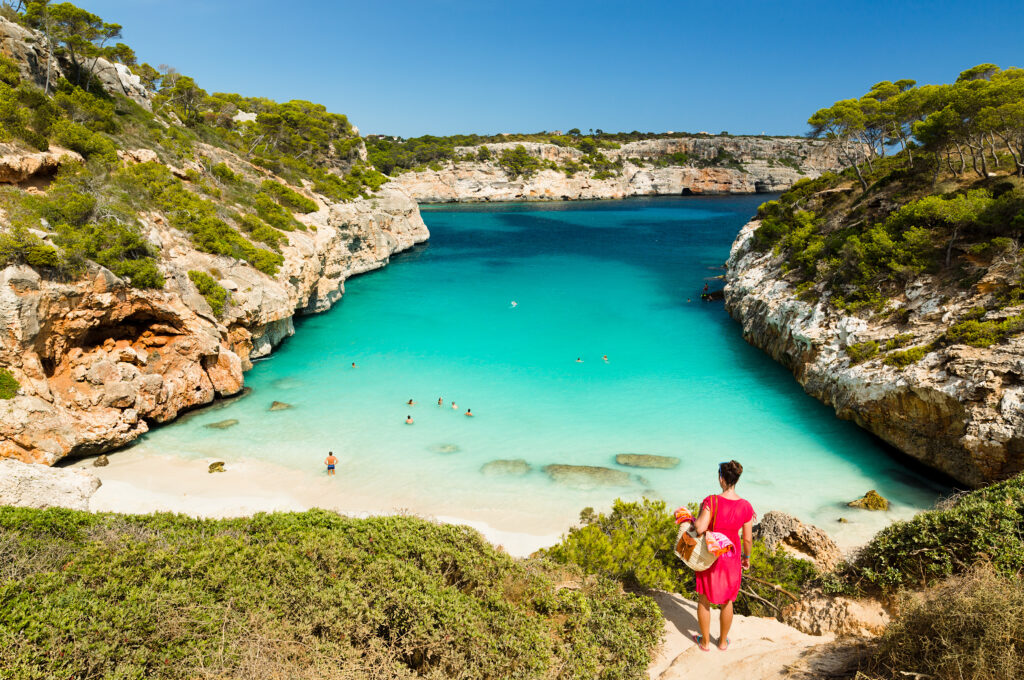
Located in the Mediterranean, not far from mainland Spain’s east coast, the Balearic Islands represent four small islands, all very diverse from one another. Venture to Ibiza, and it’s all about partying until you drop. Menorca, on the other hand, is more of an oasis of tranquility and natural grandeur. Mallorca is a mountainous island with almost everything you’d likely expect from an idyllic holiday destination. Formentera offers beautiful beaches, but a little more besides.
Together, the islands make for the perfect combination, which tends to reflect that of continental Spain—fun, beautiful, and versatile.
Toledo (Provincia de Toledo)
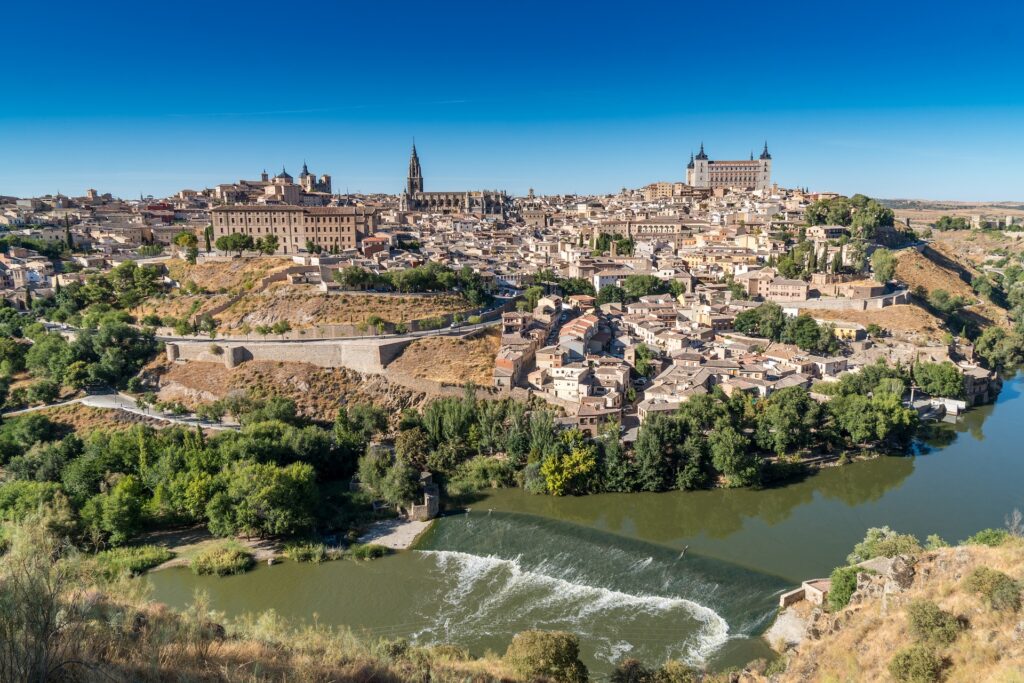
A number of religions, including Christianity, Islam, and Judaism, play keynotes in the development of Toledo, located 44 miles (73 km) south of Madrid. Surrounded by the Tagus River and sitting atop a hill, this city, along with its two millennia of history, is charmingly complex, and it will take far longer than a quick weekend trip to do it justice.
A short visit to the Synagogue of Santa Maria La Blanca, a look at the exterior of the local Cathedral, and a brief walk over the Alcántara Bridge is likely just enough to give you some appreciation for the city’s historic enchantment.
Córdoba: Great Cathedral and Mosque (Mezquita de Cordoba)

The Mezquita de Cordoba, along with its marble flooring, giant arches, gilded prayer niches, jasper columns, and Byzantine mosaics that are simply awe-inspiring, is the best example of Muslim fabric in Spain.
The 10th-century Cathedral and mosque represented when Córdoba reached its zenith under a new emir – Abd ar-Rahman III. It certainly is a wonder of the medieval world with its mystical ambiance and exotically lavish décor.
Provincia de Málaga: Costa del Sol
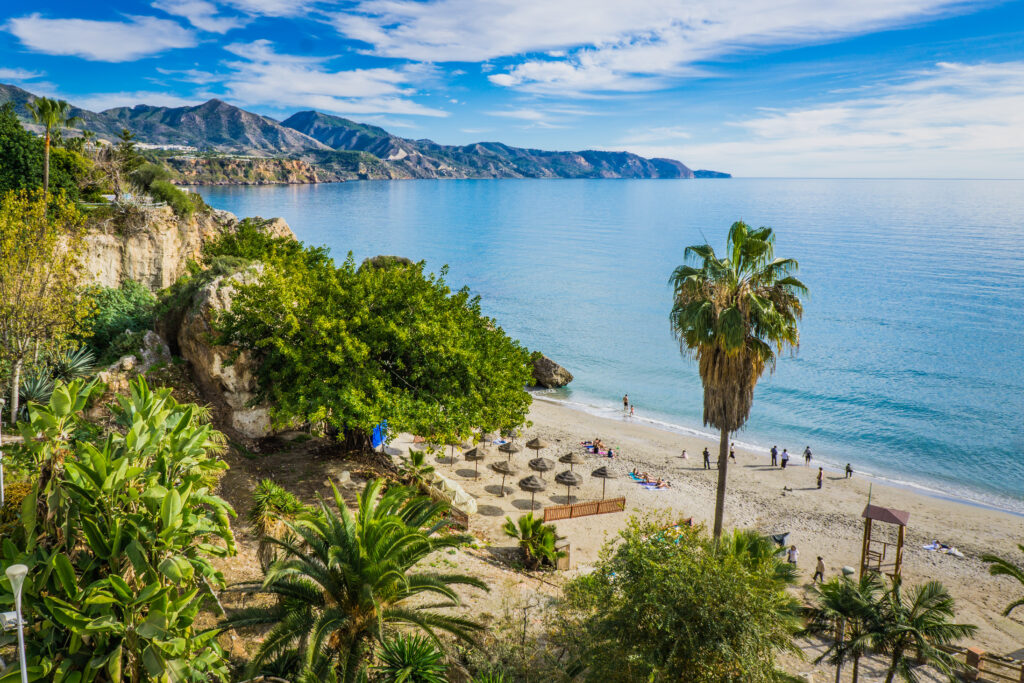
Approximately 2 million travelers descend upon the Costa del Sol resorts annually to partake in the plethora of recreational, historical, and cultural delights proliferating the Spanish mainland’s southernmost edge.
Irrespective it’s in Marbella, Benalmadena, Puerto Banus, or Torremolinos, with more than 300 days of sunshine and the blessings of nature on offer, it’s nigh-on impossible not to hit a home run. Furthermore, with Seville, Granada, Ronada, and Cordoba, but a stone’s throw away, you’re guaranteed to have your cake and eat it.
Barcelona: Church of the Sacred Family (Templo Expiatorio de la Sagrada Familia)
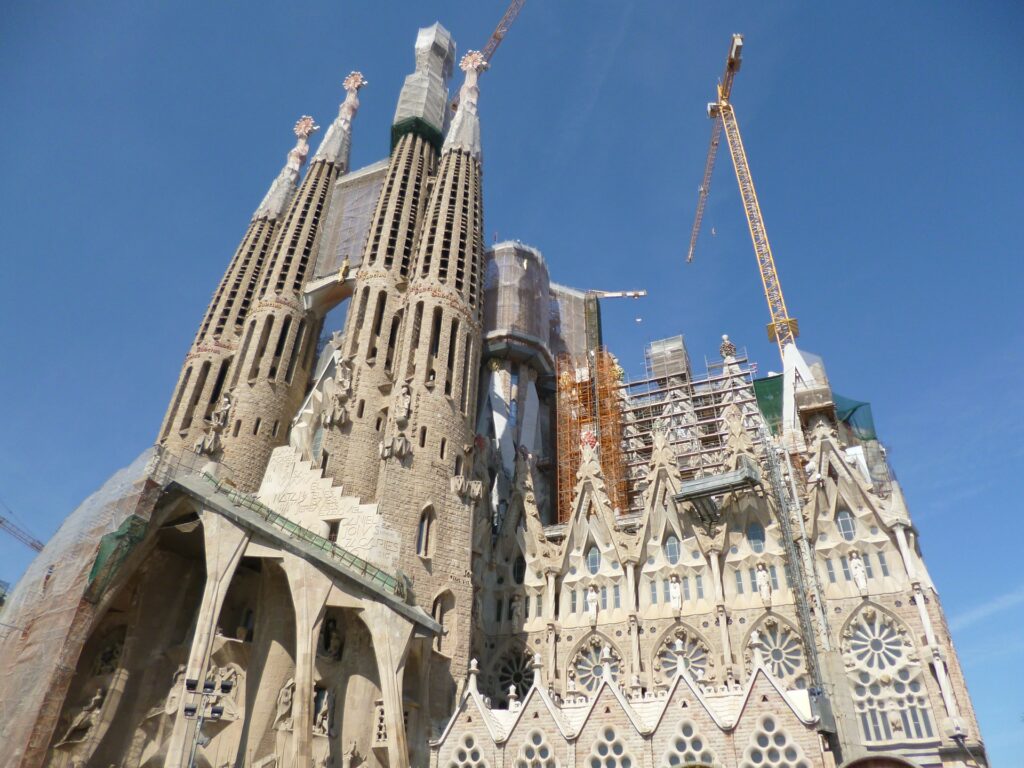
Part of the fascination about visiting the Church of the Sacred Family is that it’s been an ongoing project since it was established in 1882. Legend would have it that the world will end when the church is finally complete, should it ever be whole. Perhaps that’s precisely why it is also said that architects are struggling to fulfill Gaudi’s vivid vision and will continue to struggle for years to come.
However, arguably, a more practical reason is that the vision was conceived concerning a sense of remorse for how modern Barcelona is so hooked on materialism. Thus, the vision is so elaborate that it’s impossible to depict where it ends and where it begins. Nevertheless, the church affords a beautiful piece of architecture, and if you’re either in or near Barcelona, it should certainly be high on your itinerary.
Ronda: Ciudad de Ronda
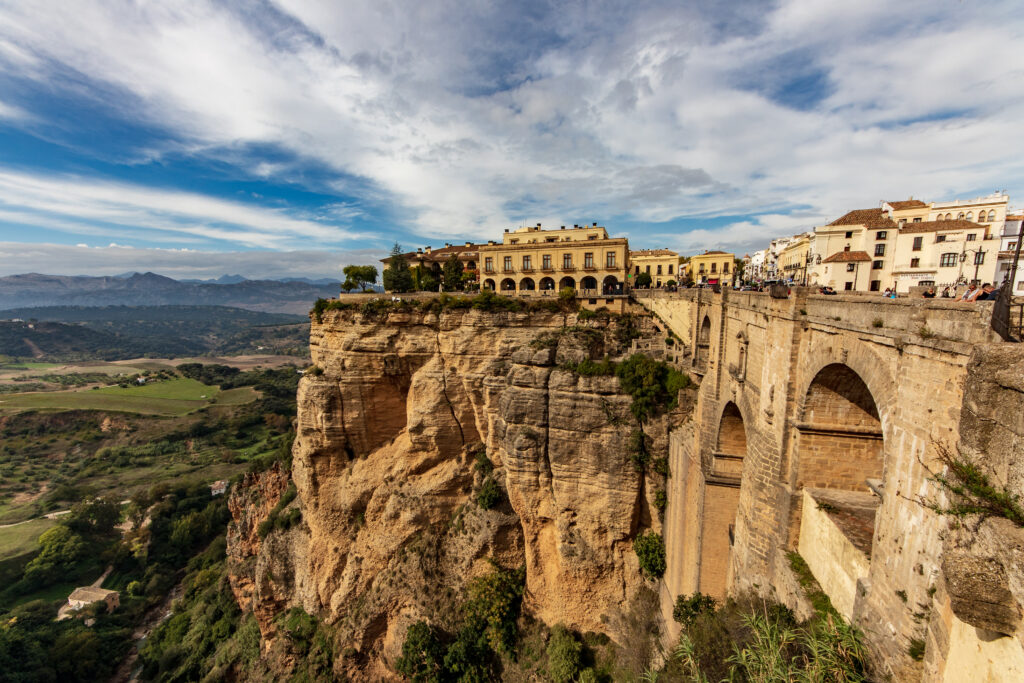
Situated in the heart of Andalusia, Ronda is among the very loveliest little towns in Spain. Though it’s currently developing at a reasonable pace, it still retains plenty of historic charm. La Ciudad, the old quarter, is where most tourists flock in droves to find those adorable sights and enjoy a little bit of romance.
The old quarter is isolated from the rest of the town by a sizable river gorge and linked to it by a structure that is said to be one of the most photographed designs in Spain. La Ciudad formulates an enclave of folklore, cobblestoned streets, and historic splendor.
Barcelona: Guell Park (Parc Guell)
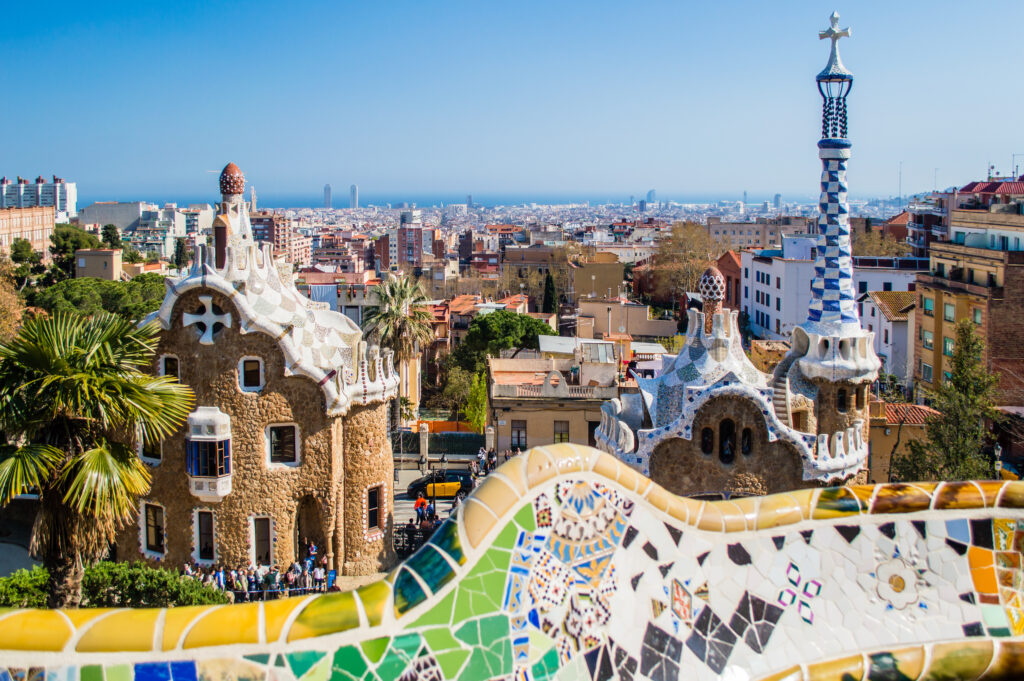
Parc Guell, resting on Carme in Barcelona’s Gràcia district, is a suitable reflection of what may be considered a surreal dream. Other than the marvelous Casa Milà, Sagrada Familia, and Casa Batllo, all of which adorn the city, it really is a wonderful manifestation of Antoni Gaudi’s unrivaled talent.
Don’t rush when visiting this wonderland of artistry. Enjoy witnessing the spectacles of color and shape as they come to rest on the mosaic seating. Allow your imagination to wander within this fairytale world that has arguably been crafted by Spain’s most enterprising architect.
Canary Islands
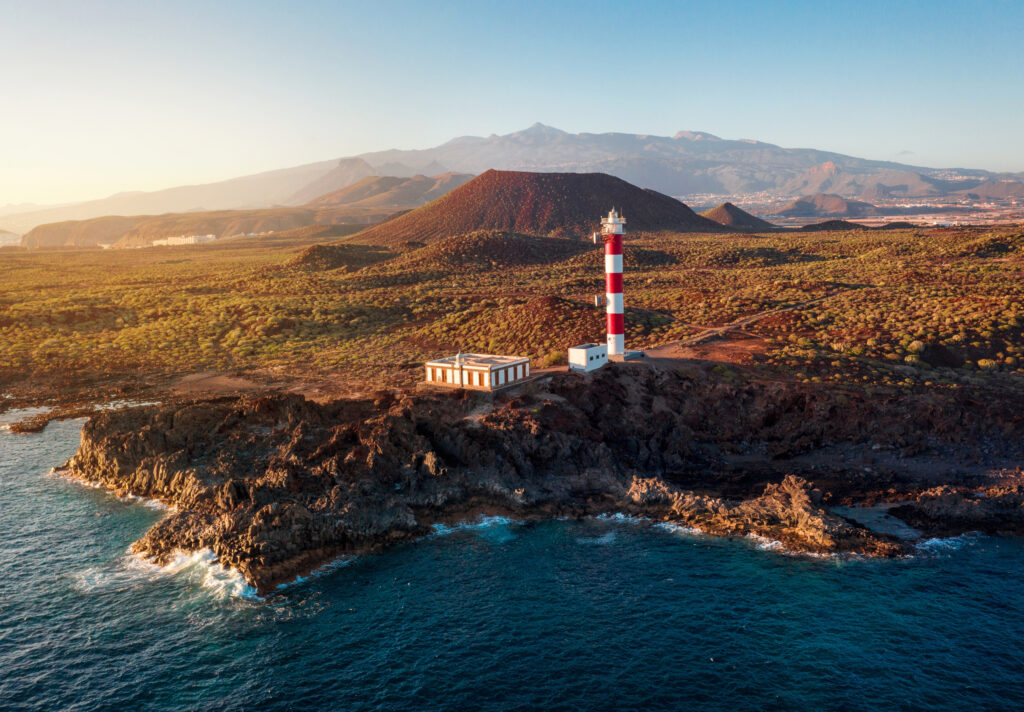
Tenerife, caressed with its temperate climate, is the island of eternal spring. Enjoy the scenery of la Rambleta up in the high mountains. Appease yourself by visiting La Laguna and its historic residences. And venture to the festivals of Santa Cruz to set your senses ablaze.
La Palma, primarily volcanic in appearance and character, isn’t the locale for those who prefer to laze on a sun-drenched beach. Foamy waves hit hard upon rocky cliffs that host vast vine plantations, avocado orchards, and tobacco fields. Pay a visit to the top of Roque de los Muchachos to view the crater of Caldera de Taburiente. While there, be sure to check out the astronomical observatory, which is said to be among the largest in the world.
Gran Canaria compensates La Palma for its lack of sandy beaches. With its Maspalomas dunes, varying climates, and changeable landscapes, you can enjoy the lush jungle of Doramas, the rocky Parque Rural del Nublo, and the beach at La Aldea in no time at all.
Lanzarote is an unparalleled wind-swept island with low buildings due to governmental restrictions, which in turn helps reveal a dramatic landscape of mountains from almost any viewpoint. Venture to the Parque Nacional de Timanfaya and the Jardin de Cactus to experience first-hand what this beautiful island is truly about.
La Gomera is arguably the most idyllic and magical of all the Canary Islands. Yes, it’s the smallest, but it’s easily accessible and can be seen within a day. Visit the Parque Nacional de Garajonay, and then settle back in one of the attractive resorts to kick back and unwind.
El Hierro is inaccessible, untamed, and entirely uncommercial. The ocean view from Mirador de la Pena fully demonstrates the wilderness, while Playa del Verodal emulates its lack of demureness.
Fuertenventura, the largest of the Canaries, is a simple island with simple values to match. Time tends to run more slowly here, and the life values quickly become infectious. It will not be long before you’re soaking up the sunshine on the sands of Fuerteventura. After all, it offers mile upon mile of beautiful snow-white sanded beaches from which you can bask from dawn till dusk.
Picos de Europa
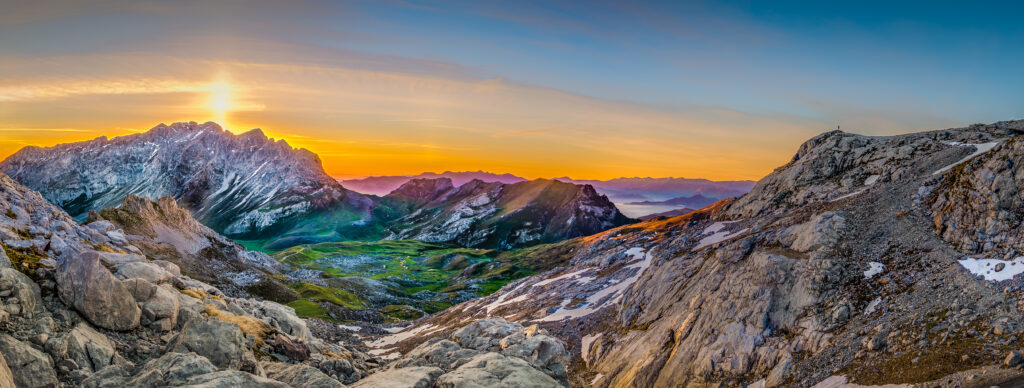
Picos de Europa is noted for its fine dining establishments in any of several alluringly angelic towns in the area. It’s where you can breathe in the refreshing air while hiking along a fabulous route and gazing at the rugged, snow-capped peaks.
You can hide yourself from the constantly oppressive heat while regaining some balance, and then you’ll realize that there’s so much more to Spain than pretty beaches and historical values. Do be sure to look out for the rarest fauna and flora species and try to prepare yourself, if you can, for the amazing vistas.
Santiago de Compostela

Santiago de Compostela is recognized as the resting place of the Apostle James. It’s a hypnotic place, and even today, pilgrims flock to the medieval Way of St. James, a route that, by tradition, began at one’s home and concluded at the magnificent cathedral, located within the heart of the Old Town. The Old Town was dCathedral a UNESCO World Heritage site in 1985.
Tourists soak up the rather solemn atmosphere of the myriad sites that pay homage to the Saint, marvel at the artistic wonders of the glistening facades, and stroll through the narrowly winding streets. On the exterior of the historic quarter, the city’s streets bustle with university students, and visitors enjoy dining in the assorted establishments that line the sidewalks.
Ávila de los Caballeros
Ávila de los Caballeros: The Walls of Avila
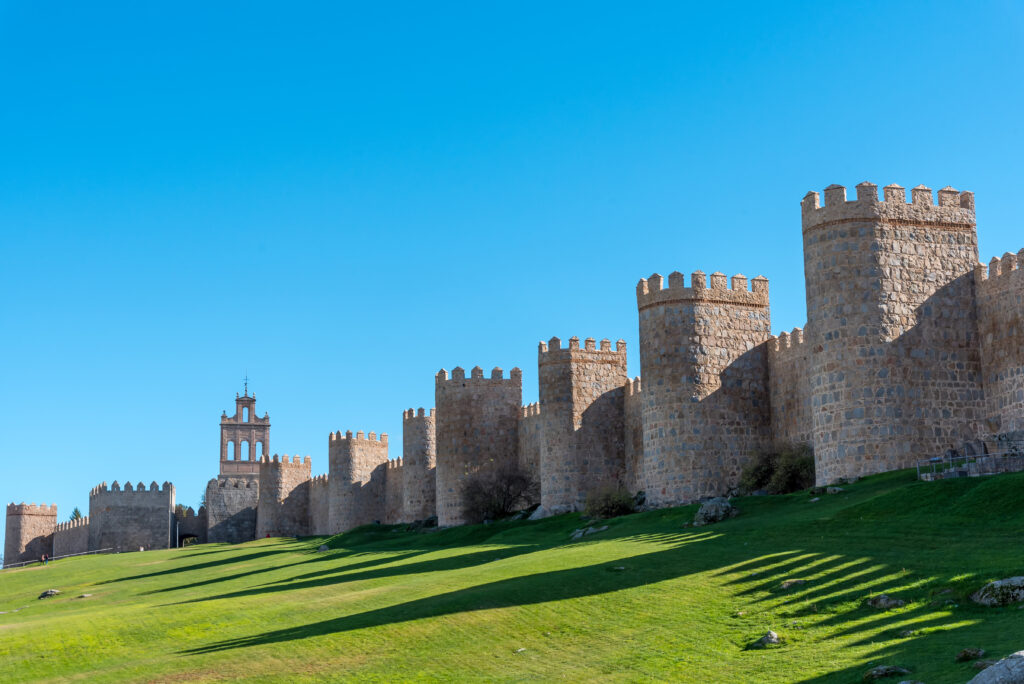
Cynics will tell you that there are merely two assets to the town of Avila – a low temperature and high walls. It’s true; the walls are colossal, and the pleasing chill offers a modicum of relief from the southern heat. Yet those same cynics are devoid of the appreciation that one of the finest surviving European medieval towns affords, together with its beautiful festivals and, of course, the legend that persists concerning Santa Teresa de Ávila.
They have yet to try the sweetmeats made by the local nuns and sold in the small shops that line the town’s streets. They have not toured the monuments, art galleries, and museums. And they perhaps have yet to enjoy the buoyant atmosphere in the dining establishments and bars, which help to ensure that the medieval settlement also has a modern flair.
Madrid: Golden Triangle of Art
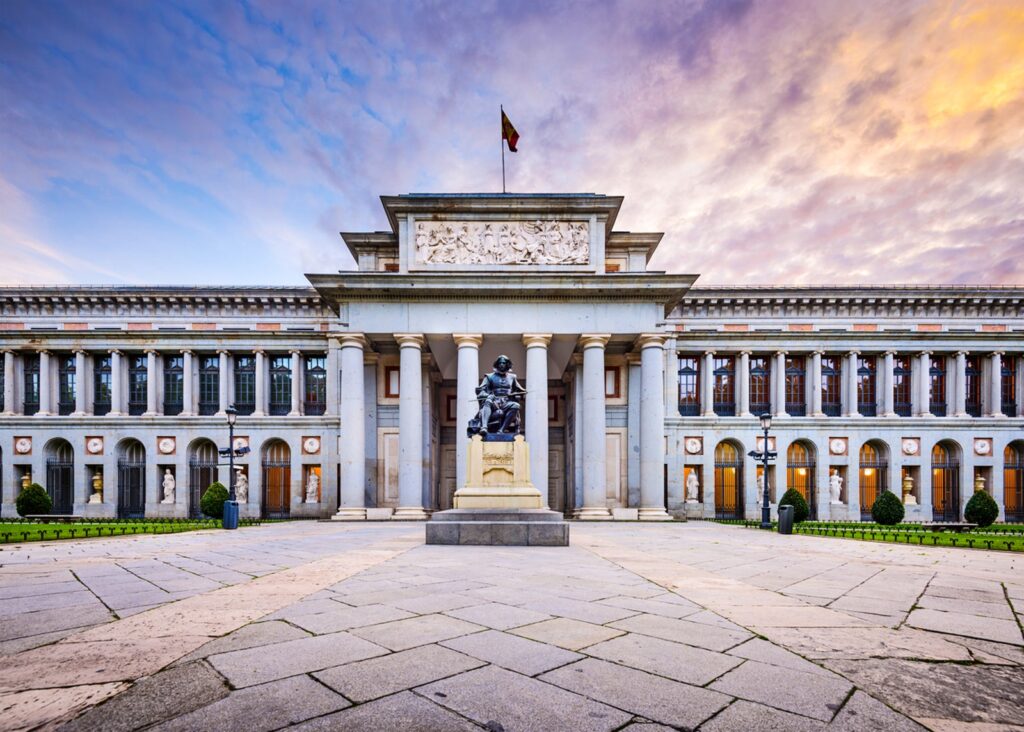
The Golden Triangle of Art in Madrid has three of the country’s most significant museums. The Museo del Prado glorifies such artists as Goya, Rubens, and Velázquez. The Museo Nacional Centro de Arte Reina Sofía dedicates its innards to a substantial Spanish art collection, but it’s Picasso’s Guernica that steals away the limelight. Although the Museo Thyssen-Bornemisza may be the least popular of the trio, it still houses some of the best Expressionist, Impressionist, and American and European paintings from the latter half of the 20th century.
Provincia de León: Las Médulas
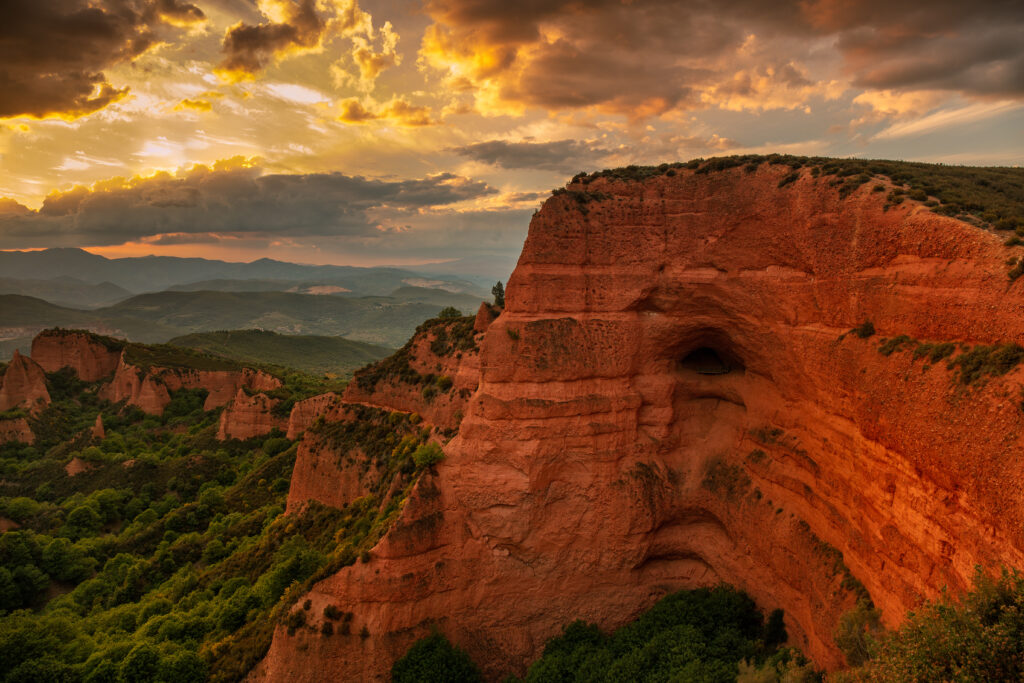
Looking at the bright orange protrusions that poke outwards from the green chestnut mass, it isn’t easy to believe that this site is the work of humans. Las Médulas are, in fact, ancient technologies that were used by the Roman Imperial armies to exploit gold deposits through hydraulic power.
The complex channel system employed running water as a force, which gushed throughout tunnels, lakes, and galleries, washing out the clay-like foundation and creating a rather unbelievable reddish outline.
Salamanca: Old City of Salamanca
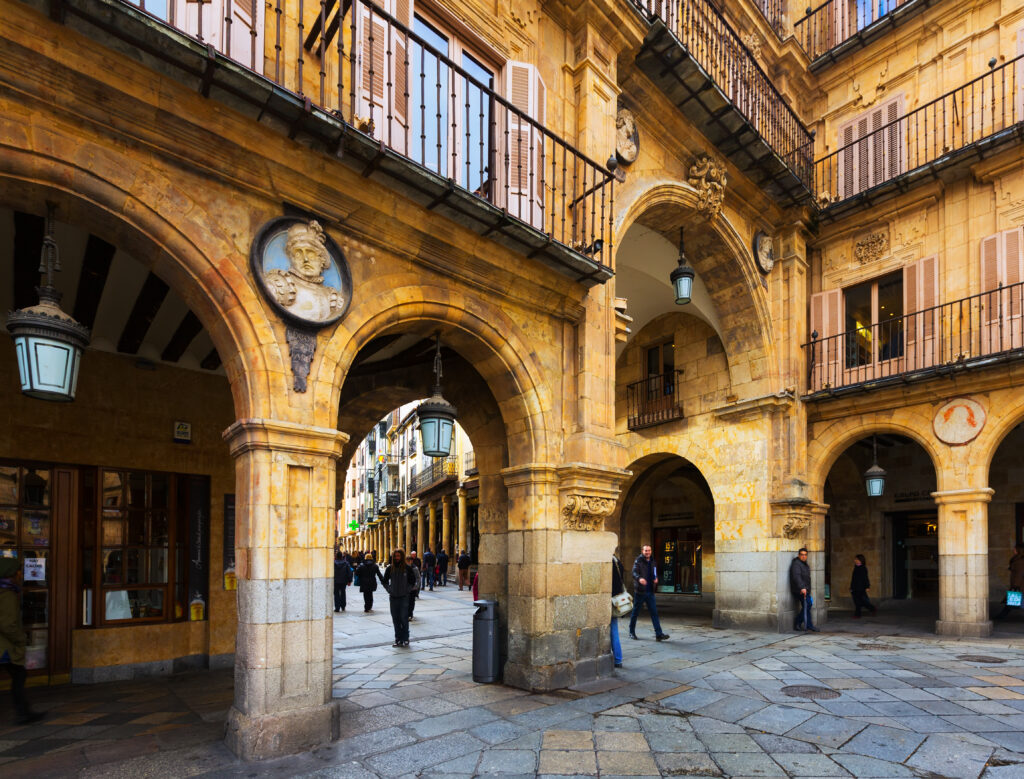
Alternating between Roman, Carthaginian, and Moorish hands, Salamanca is a multifaceted and alluring place bestowed with the accolade of UNESCO World Heritage Site. The unique sandstone gives the buildings a golden-like glow, and the maze of narrow streets endows it with a romantic feel.
Salamanca is also home to the oldest Spanish university, which allows the city to bustle with youthfulness. The Old City, with its amazing Playa Mayor, towering monuments, and imposing Roman bridge that spans the Allegheny River ensures that everyone remembers Salamanca with fondness and a large pinch of awe.
Bilbao: Guggenheim Museum Bilbao
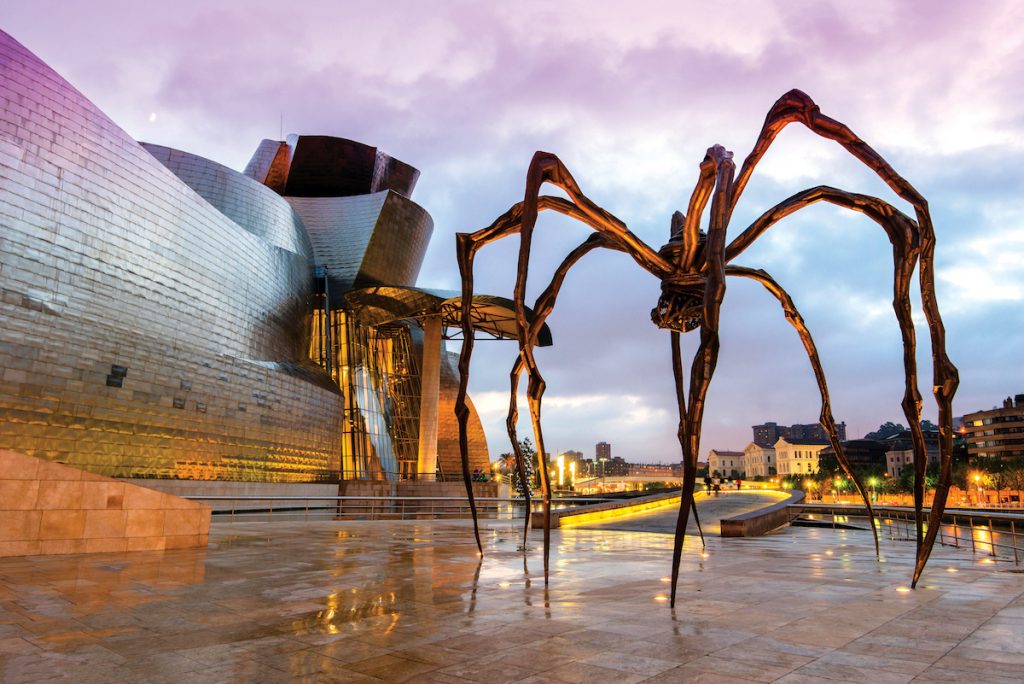
When revealed to the public, the Guggenheim Museum was instantly hailed as among the world’s most spectacular accomplishments of deconstructing postmodern architecture. Looking from the outside, you’ll most likely agree. However, at the same time, you’ll probably wonder if anything to be found on the inside will come even close to matching the building’s exterior.
Nevertheless, with both rotating and permanent exhibits of works accomplished by Spanish and international contemporary artists, there’s nothing to be disappointed about.
Seville: Alcázar
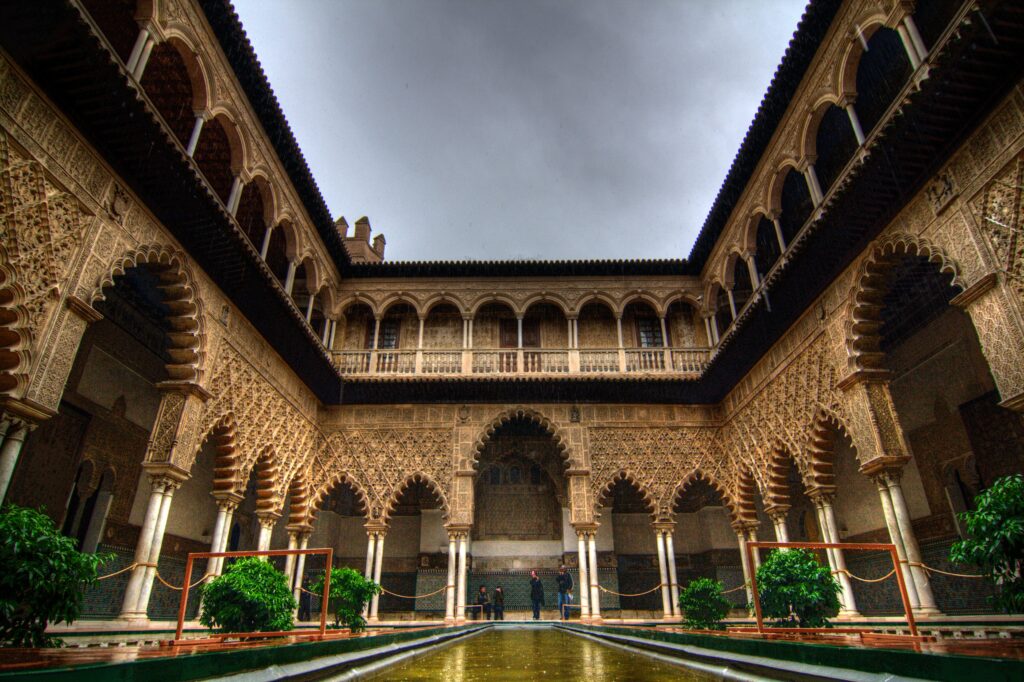
At one time a Moorish fortification and now a UNESCO World Heritage Site, Seville’s Alcázar is a miraculous concept still utilized by the Spanish Royal Family. Alcázar is far less crowded than Alhambra but hardly less inspiring, and it is well worth exploring, from the Salón de Carlos V to the underground bathhouse.
The décor reveals Christian elegance and Islamic finesse, while the shady gardens offer a relaxed vitality from the overbearing heat outside. The sheer number of rooms in the palace quickly makes one feel rather giddy. Indeed, it is a very regale attraction and one not to be missed.
Mérida: Archaeological Ensemble of Mérida
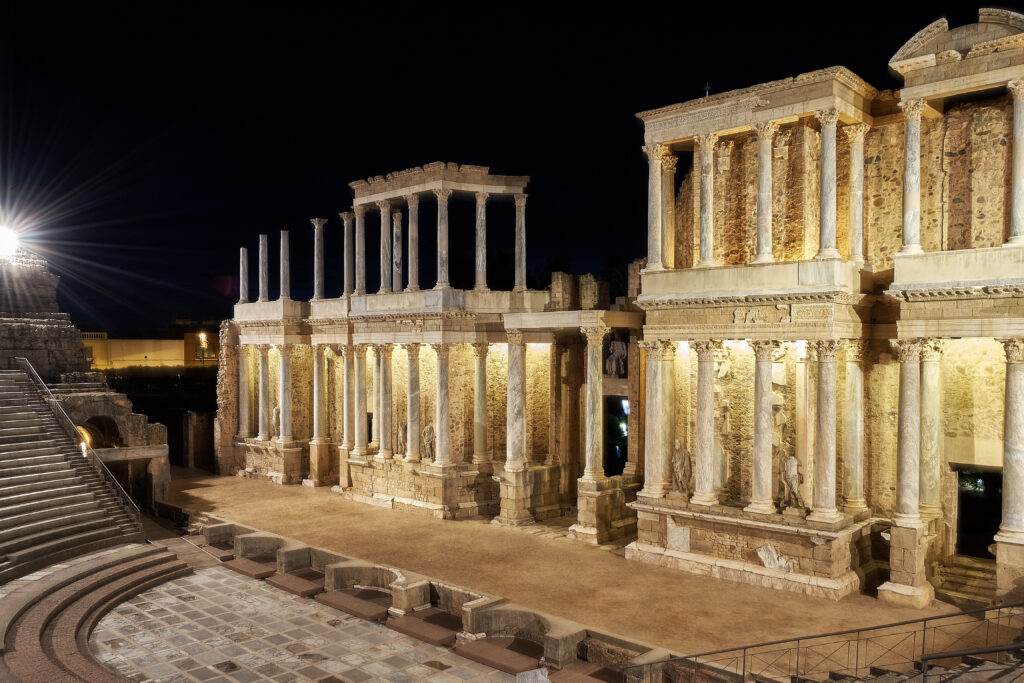
Founded as far back as 25 BC, Merida, once a thriving capital within Lusitania, boasts that it possesses the most significant number of ancient Roman trademarks in Spain.
Although the cities’ appearance may seem a little unappealing, once you’ve become accustomed to the modern eyesores, you’ll soon sense that Mérida still maintains some semblance of the gateway to the Roman empire that is now long gone. The Temple of Diana, Guadiana Bridge, and Amphitheater are merely three highlights that continue to instill an ambiance of the 1st century BC.
Madrid: Royal Monastery of San Lorenzo de El Escorial
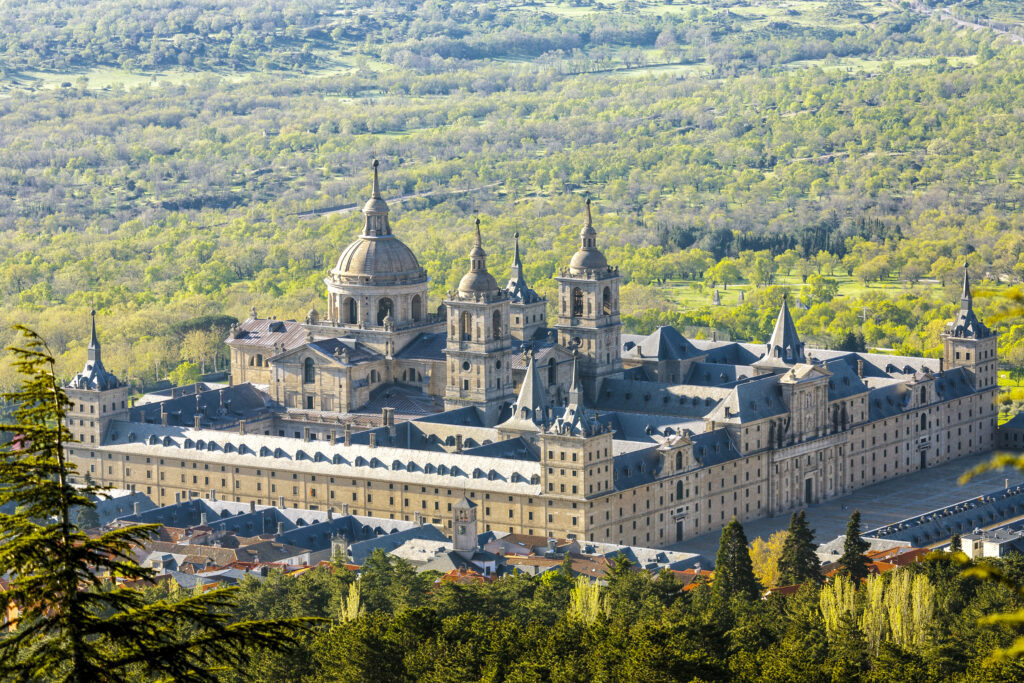
Irrespective of witnessing the Monastery of San Lorenzo de El Escorial up close or from afar, the royal connotations are promptly obvious. The symmetrical square and its four towers delineating the circumference are host to two palaces, a monastery, and a library, founded by Philip II in 1592.
Originally built as a summer retreat, the complex is rather staggering in terms of its wealth. One of Europe’s outstanding tapestry collections, a number of significant artworks by both Italian and Spanish masters, and the tombs of Spanish monarchs are among the many highlights of this royal residence.
Sevilla: Plaza de España
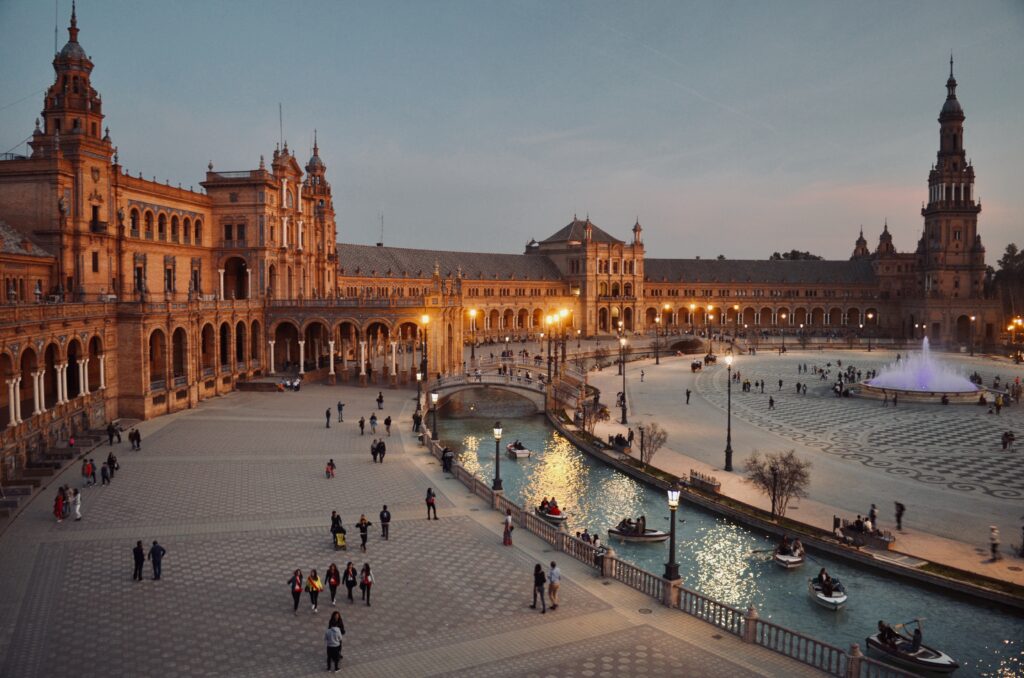
Statistically speaking, this relic of the 1929 Ibero-American Exposition is among the most photographed spectacles in the world. The Plaza de Espana represents a Moorish Revival in Spanish architecture, and it is so alluringly beautiful and other-worldly that it has been featured in the Star Wars movie The Attack of the Clones.
Whether you enjoy Star Wars movies or otherwise, the glamor that persists from the polychromatic ceramic tiling that marks the semicircular Plaza de España will nevertheless still enchant you.
Barcelona: Palace of Catalan Music (Palau de la Musica Catalana)
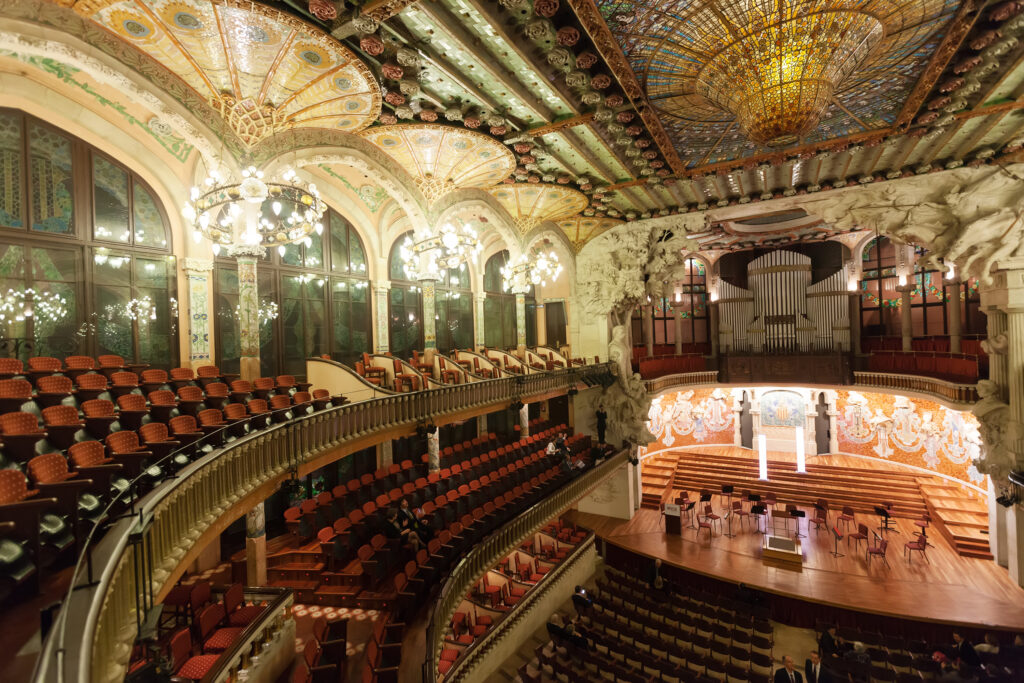
Though classical music may or may not be your idea of a good thing, and though you may not delight in the fact that master composers such as Rachmaninov, Ravel, and Prokofiev have visited Barcelona’s Palace of Catalan Music, the establishment is still an architectural delight and is well worth exploring even without the harmonic background to accompany your travels.
This large concert hall, with its exquisite Catalan Art Nouveau styling, supports a marvelous crescendo of beamed ceilings, stucco works, and lustrous facades, making it among the most unconventional modernistic designs in Spain.
Barcelona: Nou Camp

More than a club or “més que un club” is the motto for FC Barcelona, and as you would expect, an extraordinary club, in turn, needs a remarkable stadium. With its capacity of 98,772 and the UEFA status as a 5-star venue, the Nou Camp is not only the largest but also the most prestigious stadium in Europe.
Imagine for a moment almost 100,000 eager fans packed into a single stadium: you’ve got to experience it to believe it.
Madrid: Sobrino de Botin
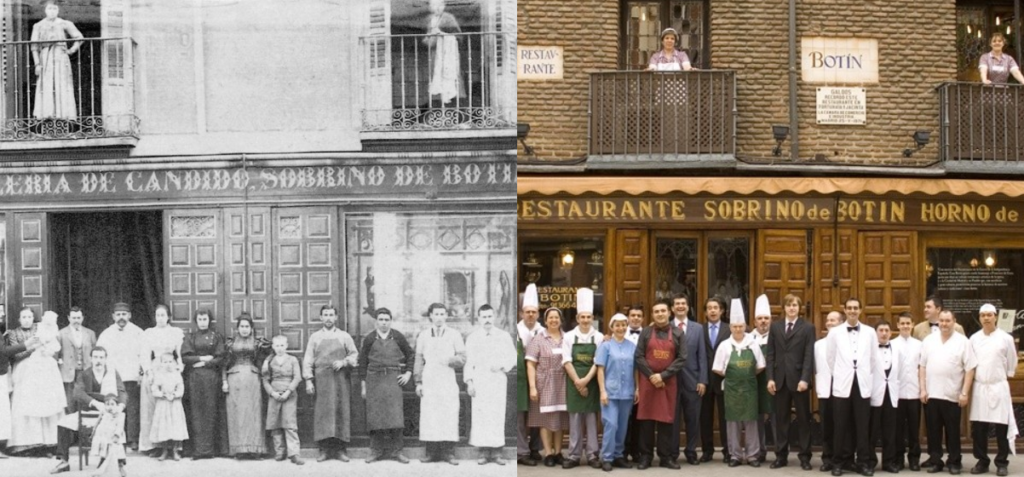
Little did Jean Botin know that upon founding his modest little inn towards the beginning of the 18th century, he would find it listed in the Guinness Book of Records as being the oldest restaurant in the world.
Located in a charmingly historic building in Calle Cuchilleros, just off Madrid’s Plaza Mayor, the inn will enchant you with its classic décor and wonderful palette of flavors. It is said that Goya worked here as a dishwasher, while Hemingway claimed it to be among his favorite restaurants. It was likely sufficient testimony to Jean Botin’s creativity and excellence all those years ago.
Granada: El Eshavira
The Andalusians will tell you, “If you’ve not yet been to Granada, you haven’t seen anything.” Likewise, if you have been to Granada but have not yet witnessed a live performance at El Eshavira, you haven’t seen anything.
The dimly lit, smoky interior tends to draw you in during the late evening hours and doesn’t let you out until almost the crack of dawn. You’ll bear witness to the smooth, jazzy tones and the accompanying flamenco dances. You may be disheveled at the climax, but you will surface with a genuine, deep-down penchant for Granada, which is now instilled intrinsically within your soul.










